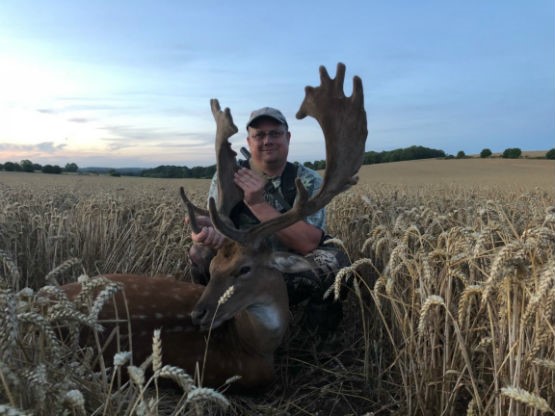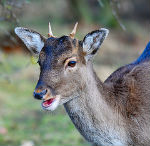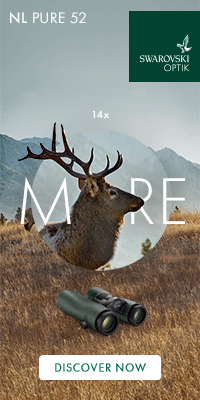
Fallow can be referred to in a number of different ways. Above is an example of a 'Master Buck'. This one shot on Capreolus Club Plus grounds as part of the club's deer stalking syndicate.
When I was in the police, and indeed for many years after, I found myself speaking a kind of lingo' that whilst recognised by others in the job sounded like 'jibberish' to those not in the know.
The use of phrases like 'IC1' male, for white males, 'SOCO' for a crime scene investigator or indeed 'Wooden top' for a police officer in his top hat, simply rolled off the tongue. More and more, I am now becoming conscious of using terms in deer stalking that also require clarification.
 With the Fallow Buck season now underway it is worth reminding oursleves of some of the terms used to describe Fallow Buck. So for those new to Fallow Buck Stalking, here's a crash course on some of the terminology used when referring to the 'flavour of the month' in the south east of England this autumn!
With the Fallow Buck season now underway it is worth reminding oursleves of some of the terms used to describe Fallow Buck. So for those new to Fallow Buck Stalking, here's a crash course on some of the terminology used when referring to the 'flavour of the month' in the south east of England this autumn!
(Left: An example of a Fallow Pricket)
Firstly by age, first year bucks are of course referred to as 'Buck Fawns' and as a rule of thumb are referred to as such until the start of the new season, at which point they become 'Prickets'.This is a widely used term and well worth committing to memory.
Fallow Prickets are identifiable by the fact that they have simple spike antlers, usually about 5 inches in length. Being mother's boys they will often remain with the Doe herds until their second or third year. On occasion the antlers are no more than simple boney knobs, at which point you might also look to identify the animal as a buck by its penis sheath, which is visible amongst even the youngsters and is often referred to as the 'tassle' or 'Pizzle'.
Often Prickets will be the only bucks that you will see in the early part of the season and are often classified as cull animals by Deer Managers and guides alike. They are in fact despite their age, good sized animals and usually significantly bigger than the accompanying Does.
Once the Fallow Buck reaches three years old it is classified as a 'Sorrel Buck', at four years old he becomes a 'Sore' after which he is a 'bare buck', 'buck' and thereafter is referred to as a 'Master Buck' or 'Great Buck'. At this stage, he should be displaying large oar shaped antlers which due to their shape are referred to as Palms. These 'palmated antlers' become longer and wider with age and the small knobs and points around the palms are called 'Spellers'.
Moving on to colour, there are four main colour variations amongst fallow deer, 'Common' which in winter is a two tone grey/brown. 'Melanistic', which basically means black, 'Menil' which is light beige and of course 'White', which requires no explanation suffice to say these animals are not albinos.
Other terms to be familiar with when speaking to other deer stalkers or when setting out with your stalking guide are 'Stand' which refers to the rutting stand which is used time and again as a static well established mating point and at which location the bucks will 'Wallow' (if wet enough), and from which during the 'rut' they will be heard 'Groaning' and or 'Belching'. which is the call they make to attract does to their stand.
With the Fallow Rut only a month or two away, let's hope that when the moment comes and we find ourselves 'glassing' (using binoculars or viewing through a lens) a herd of Fallow, that we are all speaking the same language and can be clear about which buck it is that we are sizing up!
If you'd like to hunt Fallow with County Deer Stalking you can contact us on: 0203 981 0159 or email us:
To read more about Fallow Stalking in the UK click here: fallow-deer-stalking


















